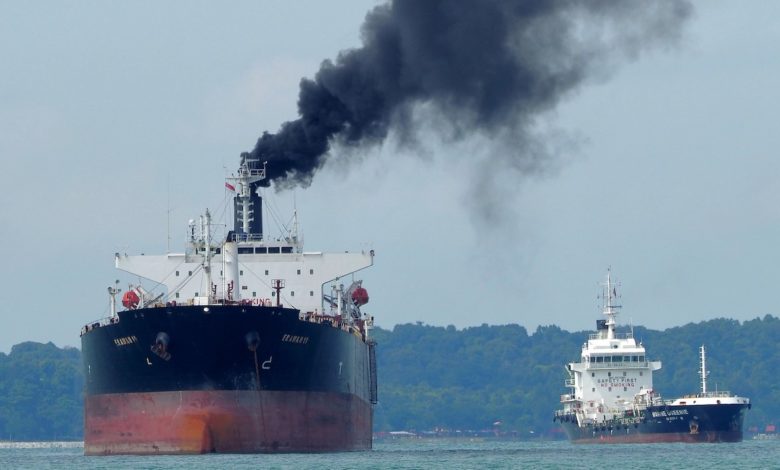Revised data shows shipping’s increased emissions in the EU

Shipping’s carbon footprint is very much in the crosshairs of European regulators this year, an uncomfortable position that is likely to become more urgent following the release of a new report by the European Environment Agency and the European Maritime Safety Agency this week, which shows the industry’s emissions are far greater than previously estimated.
Shipping makes up about 14% of greenhouse gas emissions from transport within the European Union, making it the third-biggest emitter behind road vehicles, which account for 71%, and just behind aviation, according to data in the new report.
Shipping is set to be included in the EU’s emissions trading scheme shortly with other green measures under discussion in what is widely seen as a splintering of shipping’s green governance away from the United Nations’ agency, the International Maritime Organization (IMO).
Unless we act now, the sector will produce more and more greenhouse gas emissions
“Maritime transport is expected to increase in the coming years and unless we act now, the sector will produce more and more greenhouse gas emissions, air pollutants and underwater noise,” said Virginijus Sinkevicius, European Commissioner for Environment. “A smooth but rapid transition of the sector is crucial to meet the objectives of the European Green Deal and move toward carbon neutrality.”
European shipping was rocked earlier this year with the premier of Black Trail, an hour-long investigation into the environmental impacts of the shipping industry, produced by European Investigative Collaborations (EIC).
The film interviewed Dr Tristan Smith from London’s UCL Energy Institute who warned that many of the energy efficiency regulations that the IMO is implementing are too weak to ensure that there are no rises in greenhouse has emissions from shipping over the coming decade.
“Because it takes so long to change the shipping industry we might be in a situation where shipping suddenly finds it’s 10% of global greenhouse gas emissions and then it’s 50% and then it’s even the dominant source of global greenhouse gas emissions,” Smith warned.
In July, the European Commission published the officially reported CO2 emissions of ships in 2020 – gathered under its MRV system.
Analysis of the data by NGO Transport & Environment suggested that Mediterranean Shipping Co (MSC) climbed in the rankings of EU polluters (see chart, right).

Norwegian class society DNV today published its updated maritime forecast to 2050, which includes a look at likely incoming green legislation shipowners need to be aware of (see below).


Road transport (cars, buses, vans and trucks are bigger source of emissions but there is little appetite to take on the established major manufacturers and end users. In terms of energy efficiency (often overlooked these days in the clamor over de-carbonization) shipping remains a very efficient and effective means of moving cargo. Shipping is perhaps seen as an easier target for legislation.
Think of container carriers and parcel tankers as “car pooling”. Jokes aside, we will soon see a great push for the automobile industry towards electric/dual fuel capabilities, which is feasible when you’ve got a place to charge up. Can charge a ship heading Transatlantic Eastbound from the US to the EU. But what I will say is this. The rough and tough area of shipping, often overlooked by many, will be the ones the help push technological advancement, new strategies, innovative redesign, and so on. It may as well be the shipping sector to do it, the present inconvenience to invest for the future will draw public eyes towards shipping in ways that it never has before. No one will have an excuse thereafter. The opportunities for success will open a floodgate of private equality funding where there are returns, and good publicity, to be had.